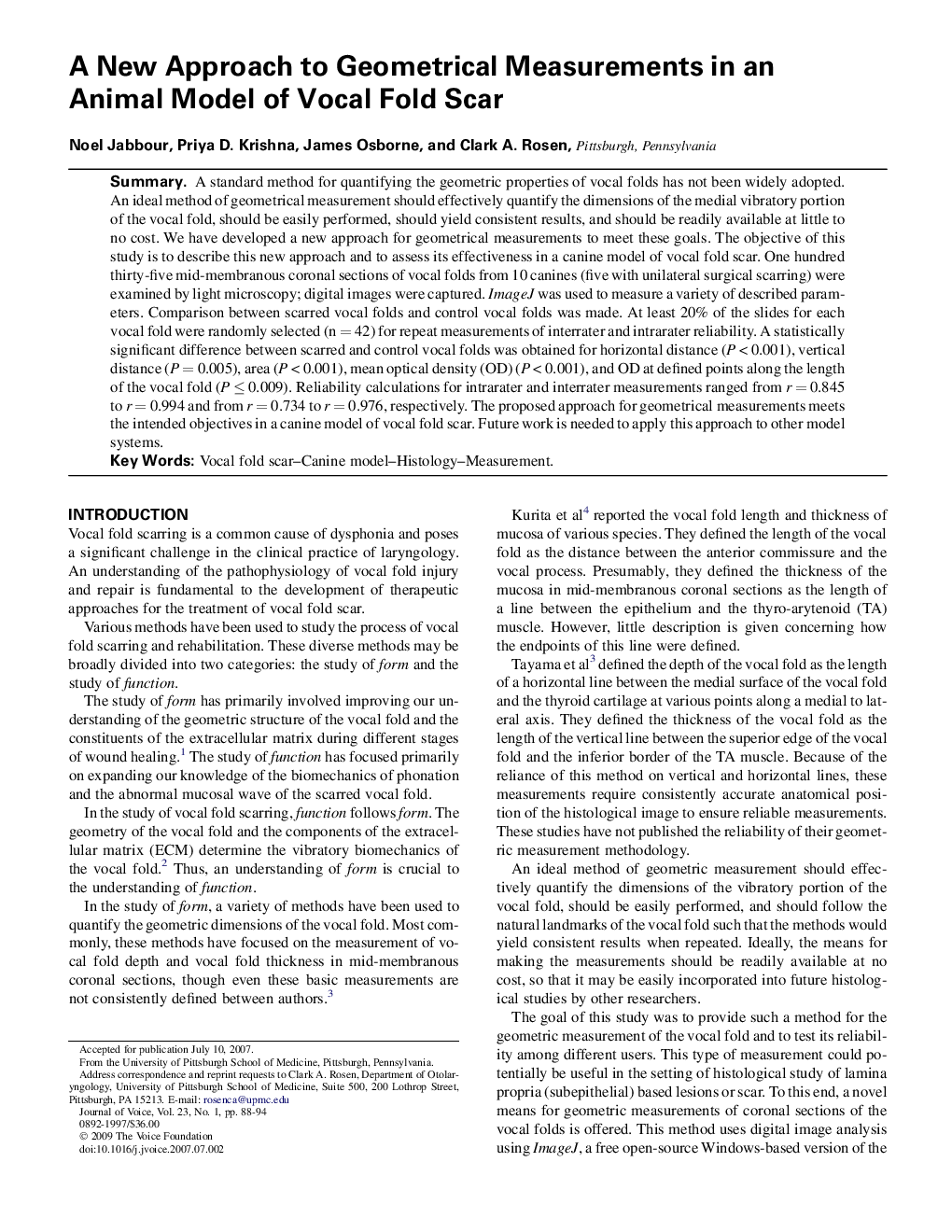| Article ID | Journal | Published Year | Pages | File Type |
|---|---|---|---|---|
| 1102845 | Journal of Voice | 2009 | 7 Pages |
Abstract
A standard method for quantifying the geometric properties of vocal folds has not been widely adopted. An ideal method of geometrical measurement should effectively quantify the dimensions of the medial vibratory portion of the vocal fold, should be easily performed, should yield consistent results, and should be readily available at little to no cost. We have developed a new approach for geometrical measurements to meet these goals. The objective of this study is to describe this new approach and to assess its effectiveness in a canine model of vocal fold scar. One hundred thirty-five mid-membranous coronal sections of vocal folds from 10 canines (five with unilateral surgical scarring) were examined by light microscopy; digital images were captured. ImageJ was used to measure a variety of described parameters. Comparison between scarred vocal folds and control vocal folds was made. At least 20% of the slides for each vocal fold were randomly selected (n = 42) for repeat measurements of interrater and intrarater reliability. A statistically significant difference between scarred and control vocal folds was obtained for horizontal distance (P < 0.001), vertical distance (P = 0.005), area (P < 0.001), mean optical density (OD) (P < 0.001), and OD at defined points along the length of the vocal fold (P â¤Â 0.009). Reliability calculations for intrarater and interrater measurements ranged from r = 0.845 to r = 0.994 and from r = 0.734 to r = 0.976, respectively. The proposed approach for geometrical measurements meets the intended objectives in a canine model of vocal fold scar. Future work is needed to apply this approach to other model systems.
Related Topics
Health Sciences
Medicine and Dentistry
Otorhinolaryngology and Facial Plastic Surgery
Authors
Noel Jabbour, Priya D. Krishna, James Osborne, Clark A. Rosen,
